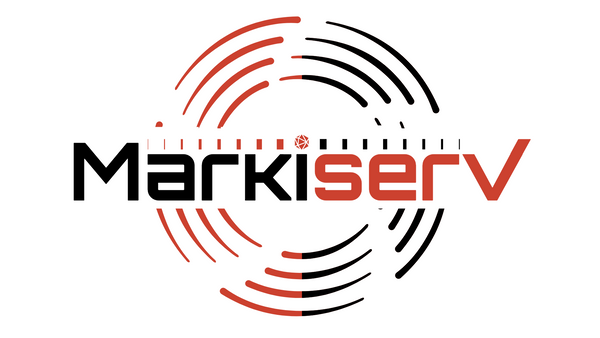
A Comprehensive Guide to Designing Materials for Business Events
Share
Event marketing is a powerful strategy for businesses to engage their target audience, showcase their brand, and build meaningful connections. However, successful events don’t just happen—they require careful planning, especially when it comes to designing materials. From banners and brochures to digital graphics, each element plays a crucial role in your event’s success.
In this guide, we’ll explore what businesses should consider when creating materials for events, how to design them effectively, and strategies for managing the process to ensure everything runs smoothly.
1. Key Materials to Design for Business Events
Before diving into design specifics, businesses must identify the materials they need for their event. Here's a checklist of essential items:
-
Printed Materials:
- Event banners and posters
- Flyers, brochures, or pamphlets
- Name tags and badges
- Table tents and menus (for catering events)
-
Digital Materials:
- Social media graphics and ads
- Digital invites or event pages
- Presentation slides
- On-screen graphics for video displays
-
Promotional Giveaways:
- Branded merchandise such as tote bags, pens, and mugs
- Custom QR codes for exclusive content
Each item should align with your event’s objectives. For example, conferences may require detailed pamphlets, while product launches might focus on bold banners and digital displays.
2. What to Consider When Designing Event Materials
To ensure your event materials are impactful, consider the following factors:
-
Target Audience:
Who are you designing for? Understanding your audience will influence design choices, including tone, imagery, and layout. -
Event Theme:
Your materials should complement the event's theme, whether it's formal, casual, or futuristic. Use consistent colors, fonts, and visuals. -
Brand Identity:
Make sure every item reflects your brand’s identity. Use your logo, brand colors, and typography consistently across all materials. -
Scalability and Reusability:
If you host recurring events, design templates that can be adapted for future use. -
Budget:
Prioritize materials based on your budget. Invest in high-quality items for the most visible aspects, such as banners and digital ads.
3. Tips for Designing Event Materials
Designing impactful event materials requires creativity and attention to detail. Here are some best practices:
-
Eye-Catching Visuals:
Use bold colors, high-quality images, and engaging typography to grab attention. -
Clear Messaging:
Keep your text concise and actionable. Highlight key details such as the event name, date, and location. -
Hierarchy and Readability:
Arrange content in a logical order. Use larger fonts for headlines and ensure all text is legible from a distance. -
Call-to-Action (CTA):
Include clear CTAs on your materials, such as “Register Now,” “Scan the QR Code,” or “Visit Booth 25.” -
File Preparation:
Work with high-resolution files and adhere to print specifications. For digital assets, ensure optimized file sizes to avoid slow load times.
4. Operational Considerations
Effective operations are essential for turning designs into tangible assets. Here's how to streamline the process:
-
Printing and Production:
Partner with reliable printers to ensure timely delivery. Always request samples or proofs to check for quality. -
Digital Deployment:
Schedule your digital assets to go live at the right times. Test links, QR codes, and embedded media beforehand. -
Inventory Management:
Track the quantity of printed materials to avoid running out. Store items securely to prevent damage. -
Shipping Logistics:
Plan ahead for the transportation of bulky materials like banners and displays.
5. Placement and Management of Event Materials
Proper placement of materials is key to maximizing their impact. Here’s how to plan their positioning:
-
Entrance and Registration Areas:
Place large banners and directional signs to guide attendees. -
Event Floor:
Use floor decals, table tents, and posters to convey key information. -
Stages and Podiums:
Brand these spaces with custom backdrops and screens for added visibility. -
Interactive Zones:
Set up kiosks or QR code stations to engage attendees.
After the event, evaluate how effectively your materials served their purpose. Collect feedback from attendees to identify areas for improvement.
6. Managing the Budget for Event Materials
Budgeting is a critical part of event planning. Here’s how to allocate resources effectively:
-
Prioritize Key Items:
Focus on high-impact materials that deliver the most value. -
Use Templates:
Reuse templates for recurring events to save on design costs. -
Leverage Digital Assets:
Digital designs are often more cost-effective than printed materials. Use them wherever possible. -
Work with Subscription-Based Agencies:
Graphic design subscription services can help businesses manage costs while maintaining high-quality output.
7. Additional Considerations
-
Eco-Friendly Practices:
Opt for sustainable materials, such as recycled paper and reusable signage. -
Post-Event Recycling:
Collect and recycle unused materials to reduce waste. -
Collaboration Tools:
Use project management platforms like Trello or Asana to coordinate with your design team. -
Technology Integration:
Incorporate AR or VR elements into your materials for a modern touch.
Conclusion
Designing materials for business events requires thoughtful planning, creative execution, and efficient management. By understanding your audience, prioritizing high-impact items, and integrating brand identity, you can ensure your materials enhance your event's success.
Whether you’re hosting a small networking event or a large conference, this guide provides a roadmap for creating impactful designs that leave a lasting impression.
Helpful Links to Learn More:
Our Guide to Event Marketing Materials
This comprehensive guide from Target Print & Mail offers insights into planning, designing, and utilizing event signage and marketing materials to elevate your event.
Event Marketing Materials: A Comprehensive Guide
PhotoADKing provides an in-depth look at various event materials, including banners, flyers, brochures, and business cards, detailing their unique purposes in enhancing event reach and engagement.
Event Design Guide/101: 15 Effective Steps
Swoogo presents a step-by-step guide to creating engaging and impactful events, covering aspects from registration to event logistics.
